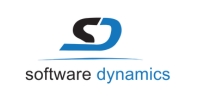ERP System Implementation Simplified
Put simply, an ERP system implementation involves overhauling your company’s old operational system and installing a modern and effective structure that drives functionality and productivity in your business, with other long-term benefits.
The system implementation involves configuring the software, migrating data, and training users on how to use it. For a successful implementation, this process may take a while (6 months to 1 year, depending on company size). The key players are implementors, the operations group within the company, and stakeholders.
Out With The Old
If you’re interested in an ERP system, it is relevant to note that new features will not solve your company’s problems. What ERP systems provide is a way to modernize your business- transforming your organization’s operations from legacy systems to a digital and electronic framework. This system increases efficiency by facilitating competitiveness and redirection: refocusing your energies on more critical tasks.
Though legacy systems have worked for a long time, they are often tired and rigid. They lack adaptability and flexibility. They could be cost-efficient, but their inability to keep up with updates and new technology is not a worthy compromise.
The High Cost of Inefficiency
Old digitized business operation systems are just that, old. Remote work and email are outdated. Centralized procedures accessible from multiple devices, secure data, and industry-specific systems drive modern businesses.
According to an infographic by Impact, the top areas with the best ROI from an ERP system implementation were: IT, inventory, and cycle time.
- IT costs went down by 40%
- Inventory levels lowered by 38%
- Cycle time decreased by 35%
Additionally, though many organizations are hesitant about it, 93% of businesses reported that ERP system initiatives were successful.
Reducing ERP Implementation Costs And Driving Efficiency
Implementing an ERP system can give an organization immense benefits. Some benefits include:
- Increased productivity and efficiency
- Enhanced departmental communication
- Scalability
- Improved decision-making
- Economizing
- Improved data accuracy
- Better customer service
However, the cost of an ERP system implementation can be high. Not to mention, system efficiency can be compromised if not thoroughly thought out.
To guarantee optimal performance and efficiency for your organization at the best value, we curated a brief list of best practices that will enable you to maximize your system’s potential.
Insight 1: Meet Your Unique Business Needs
When choosing an ERP system, you lose focus without a plan. Each business has its own unique needs and functionalities. Therefore, to stay on budget, know what your organization requires. Since ERP systems are customizable, it is critical to have one that fits these needs. Unnecessary functionality in your purchased ERP solution can result in unforeseen expenses. Choose an ERP system that is flexible to your organization’s needs, versatile to accommodate changes in business requirements, and offers modular functionality for purchasing only necessary features. It would also be a safe bet to ensure your system is extendable with a long-term roadmap for sustained benefits.
Insight 2: Choosing the right partners
For the safety of your business, it is crucial to choose experienced software partners with local and industry knowledge. This precaution allows your business to get ERP system implementors that can understand your unique business and industry needs and offer tailored solutions. Before selecting a partner, research them thoroughly, looking at their website and social media, contacting their references, and looking through their success stories that match your industry. Partnering with experts can help you have a safe and secure ERP system that suits your needs, does not exceed the budget, with maximum benefits.
Insight 3: Staying on Track
Without efficient planning and budgeting for an ERP system implementation, an organization can get blindsided by disorganization, unfinished operations, or increased cost. Stakeholders need to assess essential components from the beginning, such as software and hardware costs, consultant requirements, and data transfer approaches. The lack of this assessment can lead to complications, interruptions, and unexpected expenses. Because of this, an organization’s prerogative is to find ways to stick to the budget. Fortunately, some software partners offer free consultations that can kickstart your budgeting phase at no cost and with ease.
Insight 4: Communication and Training
Although ERP systems are beneficial, there is difficulty in dealing with mindsets. Overhauling the old business processes into the new system is difficult for many organizations. Since the system increases productivity and efficiency, daily workflow changes. To have an easier transition, involve stakeholders from different parts of the organization earlier. Communicate the benefits and features of the new system and the cause of the implementation, and offer extensive training and support to help users embrace the new system.
Insight 5: Consolidated Data and Modern Technology
Before the data migration step in the implementation process, an exercise needs to occur. Since many departments interact with the same stakeholders, it is easy for errors to be present, such as duplicated and obsolete data. That’s why companies must have a team from different departments to review their data and make it clean. Without this ‘tidying-up,’ it is easy to have errors and difficulties moving forward.
Insight 6: Counting the Costs of Maintenance
ERP systems require routine checkups. Meaning there is a maintenance fee that occurs during this process. Without your involvement and knowledge, the costs can add up pretty quickly. In the planning phase of your implementation be sure to factor in the long-term support options from your software partner.
Your Implementation Partner – Take The Short Cut.
An ERP system implementation is a tall order for any organization. The thorough planning and revision of your organization can be tasking and time-consuming. However, it doesn’t have to be.
Save yourself the hassle of spending hours searching the internet for the right software partner by choosing Software Dynamics for all your implementation needs. Look through our case studies and see what we can achieve for your company.
If you still have doubts, book a free discovery call and let us know how we can help you implement an ERP system.



